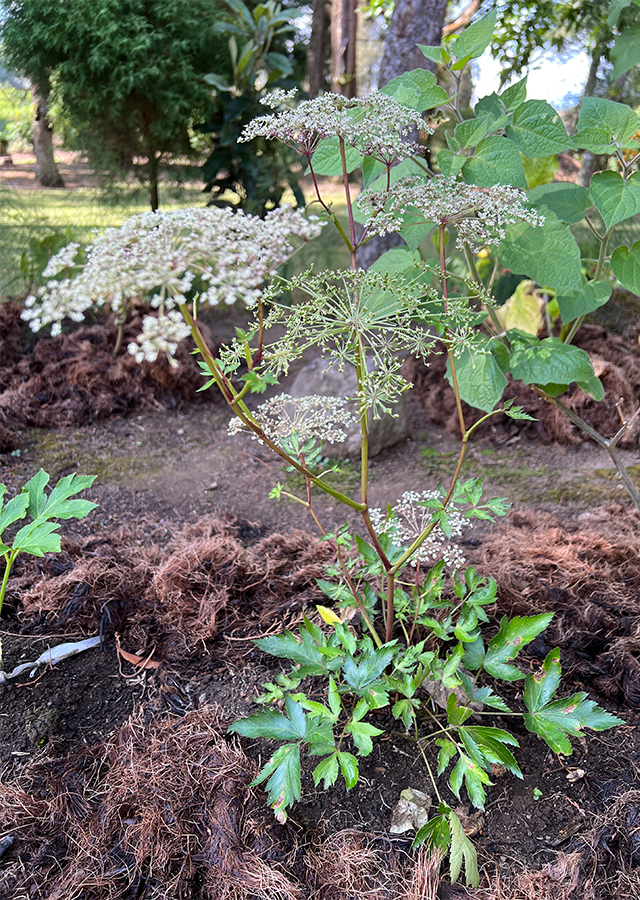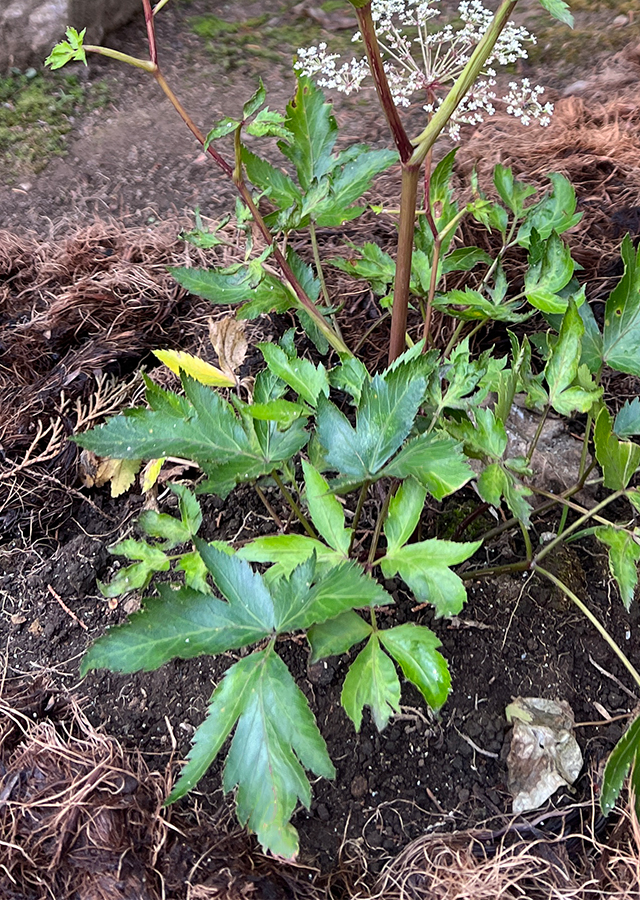Traditional Herbs from Angelica acutiloba
regulate_menstruation_and_eliminate_pain
- Take the roots of the plant and wash them thoroughly.
- Boil until boiling.
- Let it warm/cold.
- Strain and drink.
What is Angelica acutiloba Looks like??



Parts of Angelica acutiloba that could be used
- Root
Angelica acutiloba Distribution
Angelica acutiloba originates from Central Japan. This plant is only planted in yards in mountainous areas and has never been planted on a large scale in Indonesia. In Indonesia, this plant is only found in Java and Madura. It is one of the plants in Indonesia that is used as a natural dye and traditional medicinal ingredient by the community. In Central Java, the roots or stems of dressing when mixed with masoyi, black cumin, nutmeg, pepper, cloves, klembak, orange juice and red chilies will produce a red color. Apart from that, Angelica acutiloba is also used in parem mixtures or herbal medicine mixtures. Angelica acutiloba is a famous Chinese herb that has been used in the treatment of women's ailments for many years. Its reputation is perhaps second only to that of ginseng (Panax ginseng) and is particularly renowned for its 'blood tonic' effect on women. The root has a very distinctive sweet and spicy aroma and is often used in cooking, which is best taken as a blood tonic.Agroecology of Angelica acutiloba
Species in this genus generally grow best in deep, moist marginal soil, at elevations of 2000 m above sea level, in dappled shade or full sun.
Morphology of Angelica acutiloba
- Long round roots of irregular shape, short tuberous with several thickened secondary roots.
- Stems are small and noded, glabrous, striated, dense.
- Wide leaves alternate, long petioles at the bottom of the stem, pinnate 1-2 pinnate, deltoid stripe, 10-25 cm long, glabrous, leaf midrib present, no stipules trifid, 5-10 cm \u00d7 1-2.5 cm, pointed, truncated or rounded at base, final segments lanceolate, long pointed, dentate margin, prominent reticulate venation.
- Flowers are yellow at the end of the stem, clustered in a cluster resembling an open umbrella in diameter \u00b1 20 cm, flower stalks can also reach \u00b1 25 cm in length.
- The fruit is elliptical resembling a small tube, length \u00b1 8 mm, wide \u00b1 3 mm, fruit color green to yellow-brown.
Cultivation of Angelica acutiloba
Propagation is done generatively using seeds. Seeds are best sown in a cool room as soon as they are ripe as they only have a short viability. This plant requires light for germination. When large enough, transplant the seedlings into individual pots and plant them in a cool room. Seeds can also be sown on site as soon as they are ripe.
Angelica acutiloba, more details :
Chemical Content of Angelica acutilobaPolysaccharides, lactones and alkyne. The roots of A. acutiloba contain two anticholinergic compounds: ligustilide and butylidenephthalide. They also contain seven analgesic compounds: falcarinol, falcarindiol and falcarinolone (polyacetylenes), and choline, scopoletin, umbelliferone and vanillic acid.
Benefits of Angelica acutiloba
Used in Japan and China as a general tonic and prescribed in the treatment of dysmenorrhoea, phthisis and bleeding. Furthermore, it is used as an emmenagogue, a medicine for anemia, reduces pain during childbirth and in Indo-China, is a carminative and galactagogue. Has activity as an antioxidant.
Simplisia of Angelica acutiloba
- Prepare the roots of the plant and wash thoroughly with running water.
- Dry in the sun or in an oven at a temperature\u00a040\u00b0C until the water content\u00a010%.
- Cleanse using a blender until it becomes powder.
- Save in container\u00a0clean and airtight.
Another Facts for Angelica acutiloba :
Synonym of Angelica acutilobaLigusticum acutilobum Siebold & Zucc.
Habitus of Angelica acutiloba
Herb. Annual herb, 30-100 cm high
Habitat of Angelica acutiloba
- Mountains
No comments:
Post a Comment